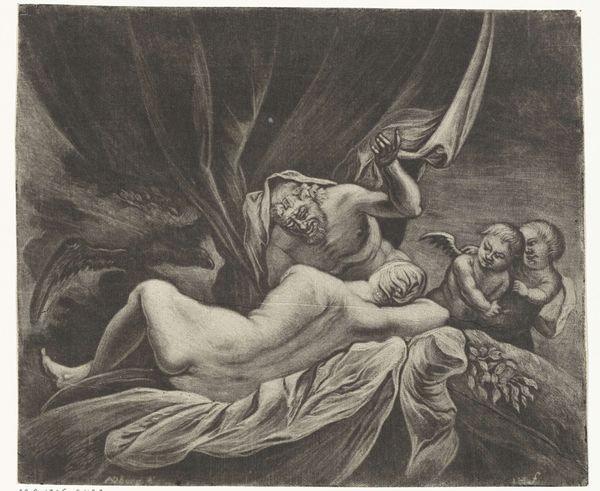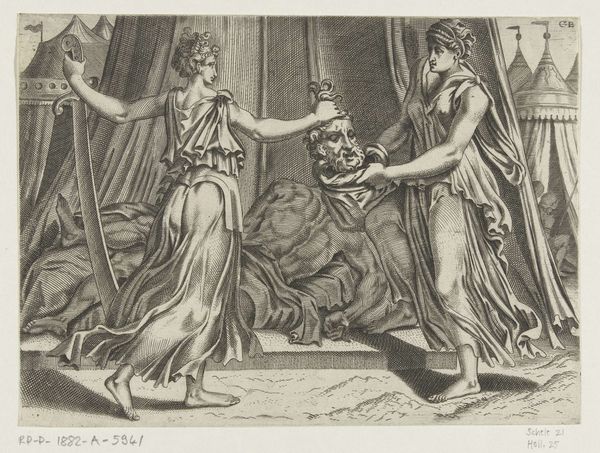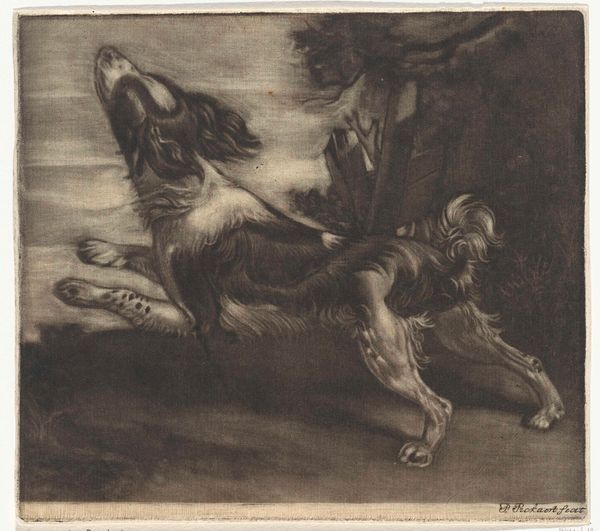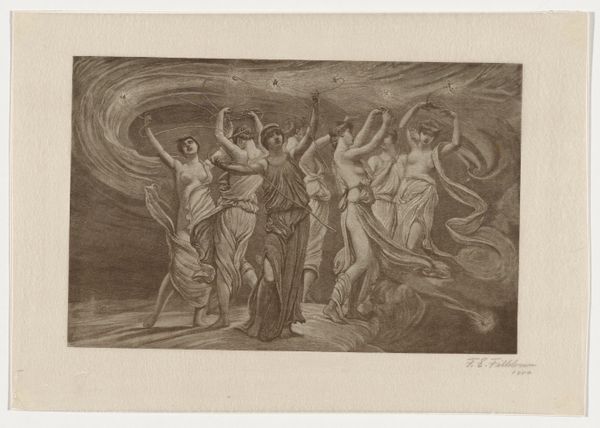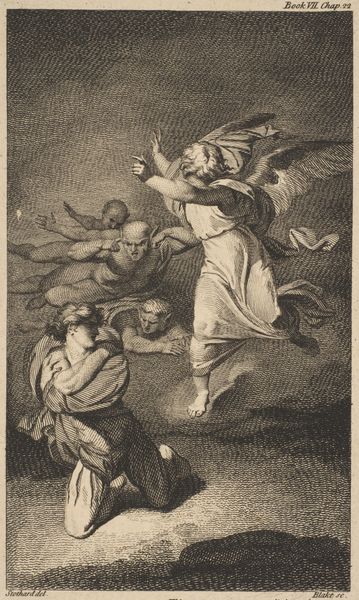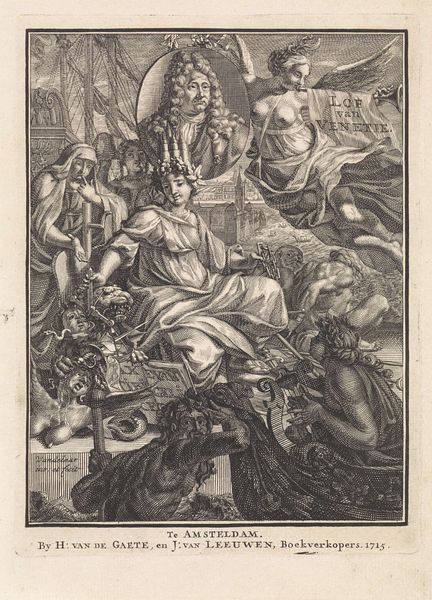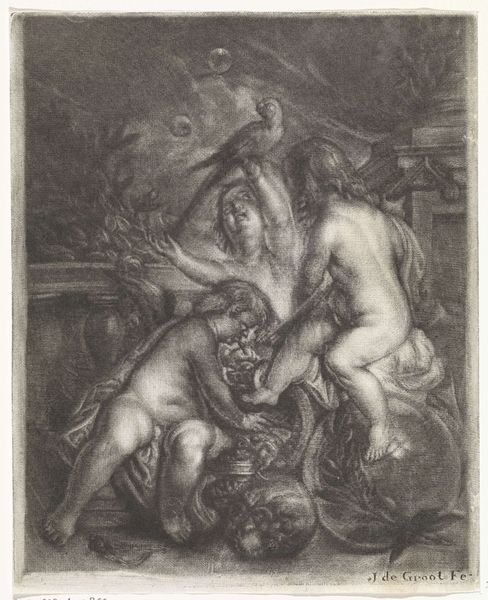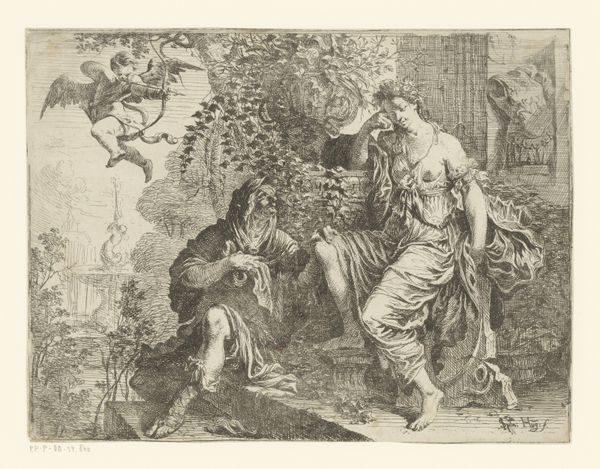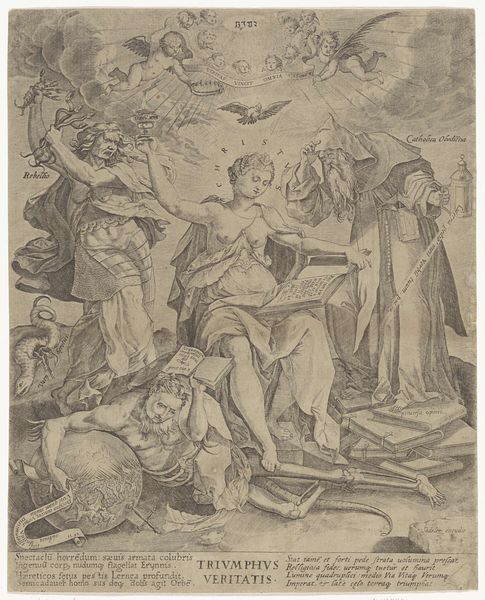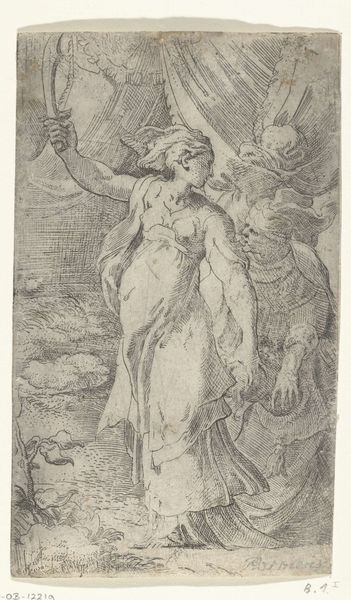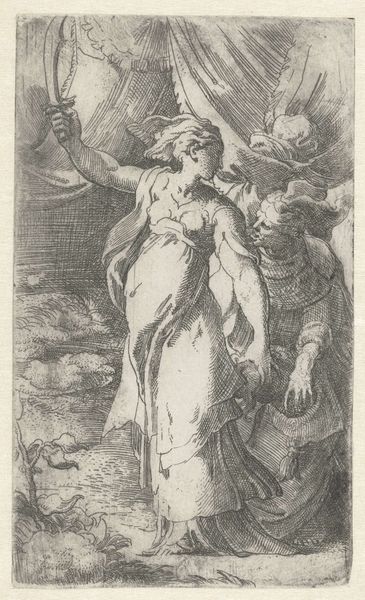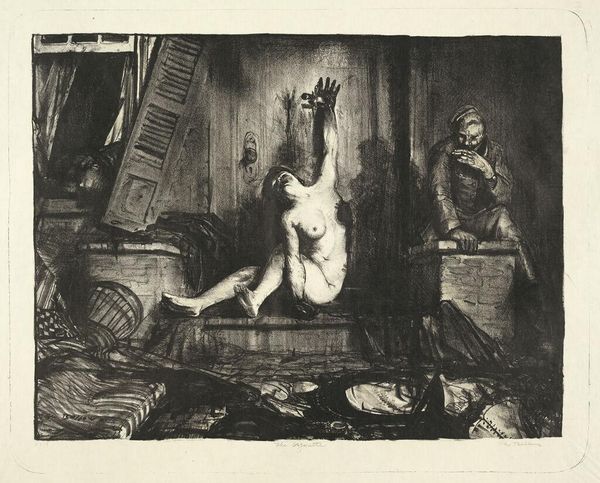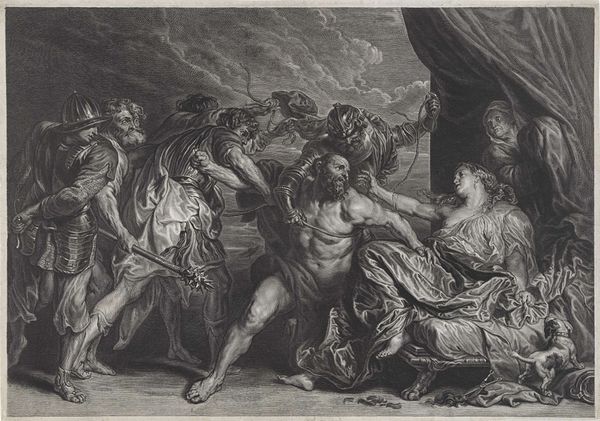
engraving
#
allegory
#
narrative-art
#
baroque
#
figuration
#
line
#
history-painting
#
engraving
Dimensions: height 309 mm, width 385 mm
Copyright: Rijks Museum: Open Domain
Editor: Wallerant Vaillant's engraving, "Rinaldo and Armida," made sometime between 1658 and 1677… it has a very theatrical, dramatic feel. What strikes me most is the tension between the figures. How do you interpret this work? Curator: It’s interesting to consider Vaillant's choices in the context of his time. The 17th century was grappling with shifting power dynamics, and the narratives artists chose often reflected those anxieties. This scene, ripped from Tasso’s *Jerusalem Delivered*, freezes a pivotal moment where love and duty collide. The male figure, Rinaldo, looks as though he is trying to persuade Armida, but who has the true power? Editor: Well, visually, it seems Rinaldo has the most dynamism. He's rushing in! But the figures are both in armour; however, I find that it does not express true power, just the garments of that power, even as the narrative is very engaging. Curator: Exactly! Consider the gaze – Armida’s direct stare versus Rinaldo’s pleading one. Who seems more in control? And what about Cupid, hovering nearby, pulling at Armida’s dress? The question of agency is critical here, is she acting on her will, or under Cupid's power, which would echo debates about free will versus divine influence. Editor: I didn't think about the composition, but the gazes do frame her to be more authoritative, so I agree with your statement! So it's less a straightforward historical painting and more of a commentary on individual autonomy within a complex political world? Curator: Precisely! Vaillant uses the visual narrative to ask us to interrogate the power structures and the very notion of heroism and villainy that was being offered by narrative art. It becomes less about glorifying war and more about understanding internal battles, questioning dominant ideologies, and the societal constraints within which individual destinies play out. Editor: I will certainly look closer the next time, and thanks for sharing this interesting lens! Curator: Likewise. It is enriching to look at art this way, it generates more discussion.
Comments
No comments
Be the first to comment and join the conversation on the ultimate creative platform.
